 English
EnglishThe Eustachian Tube (ET) is a small tube connecting the nasopharynx to the middle ear. The ET is normally closed but opens every 1-2 min with swallowing, yawning, or other movements. It is approximately 25 mm in adults and shorter and more horizontal in children. The most important function of the ET is to maintain ambient middle ear air pressure to preserve good middle ear health. When there is ambient middle ear pressure
in the middle ear, sound transmission to the inner is efficient. With infants and children having a shorter and more horizontal ET, the ET does not always function effectively leading children to be more prone to middle ear disease.
ET testing offers an objective evaluation of function and is often used before a repair of a tympanic membrane perforation, surgical removal of tympanostomy tubes, or when patients report difficulty with pressure equalization, or symptoms suggesting a patulous ET. ET function can be assessed with conventional tympanometry by indicating negative middle ear pressure e.g., >-200 daPa middle ear pressure indicating that the ET function is presently abnormal but not necessarily a chronic dysfunction. Conversely, a normal tympanogram does not necessarily go along with normal ET function. The tympanometric results are only a snapshot taken at the time of the test. Further testing is often needed to get more information about ET health.
Two common clinical tests can be performed if the tympanogram is normal and the tympanic membrane is intact. They are the Toynbee and the Valsalva maneuvers. On the PATH MEDICAL acoustic immittance devices, you are led through the procedures as shown in the figures below. From the PATH MEDICAL device menus, select Immittance, then ETF, and select the test for Non Perforated Eardrum, Perforated Eardrum, or Patulous Eust. Tube from the test options.
For the Non Perforated Eardrum, you will be guided through the testing as shown in figure 1 – 3. First, complete a tympanogram (figure 1).
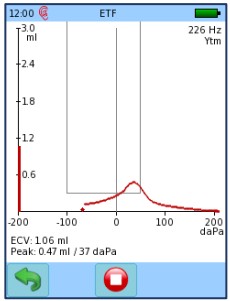
Figure 1. The first step in the sequence of Eustachian Tube function test is to complete a tympanogram.
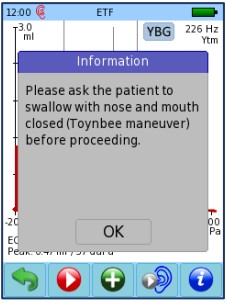
Figure 2. The second step in the sequence of Eustachian Tube function test is to complete a tympanogram while the patient does a Toynbee
maneuver.
Next, you will see the instructions to complete the Toynbee maneuver. The Toynbee maneuver is accomplished by having the patient pinch their nose closed, keep their mouth closed, and have them swallow. Swallowing is often easier for some patients by offering them some water (figure 2).
Once the Toynbee is completed, you will see the instructions to complete the Valsalva maneuver. The Valsalva maneuver is accomplished by having the patient pinch their nose closed, keep their mouth closed and have them gently blow (figure 3).
If the ET is functioning appropriately, you will see shifts in the peaks of the tympanogram. For the Toynbee, there will be a negative shift in pressure, and for the Valsalva, there will be a shift to positive pressure (figure 4).
If there is an opening in the tympanic membrane due to a perforation or patent tympanostomy tube, select the test option for Perforated eardrum. For this test, introduce positive (or negative) pressure of approximately (e.g., 225 daPa). The patients should be instructed to swallow multiple times during the test. If the ET is opened, pressure
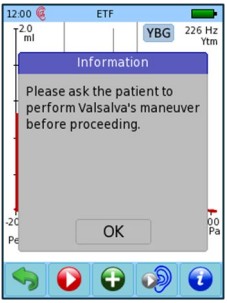
Figure 3. The third step in the sequence of Eustachian Tube function test is to complete a tympanogram while the patient does a Valsalva maneuver.
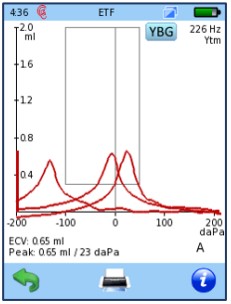
Figure 4. The results of the Non Perforated Eardrum test in an ear with normal ET function.
will drop and you will see a staircase tracing as shown in figure 5. Care should be taken to ensure an airtight fit of the probe during the test to ensure that the pressure drop is due to the ET function and not due to leakage from the probe to the ear canal seal.

Figure 5. The results of the Perforated Eardrum test in an ear with normal ET function.
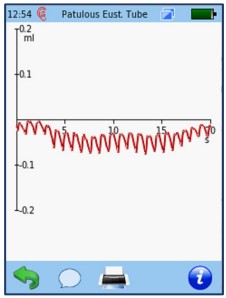
Figure 6. The results of the Patulous ET test showing the heartbeat rhythm of a patient.
The ET is most likely working properly If the pressure returns toward 0 daPa upon pressurization. If pressure does not equalize, have the patient swallow several times over 20 seconds. If pressure still does not equalize, there is likely ET dysfunction.
Test for patulous ET. Used for patients to assess if the Eustachian Tube stays permanently or intermittently open. This test is often performed when patients report autophony (hearing their breathing, hearing their voice loudly, or echoing in the ears) as they may have a patulous ET.
The test is done by evaluating the admittance change recorded over 20 seconds. The patient can be asked to breathe quietly through their mouth, force breathing through their nose, or hold the nostril closed contralateral to the probe and force breathing. A patulous ET would produce admittance changes coinciding with inhalations and exhalations. Furthermore, the patient can be asked to chew or swallow during the test. When ET is permanently open, a higher fluctuation of admittance is expected compared to normal middle ear status. Commonly, the rhythms of heartbeat (see Figure 6) or breathing can be identified in the admittance curve in these cases.

 Українська
Українська Русский
Русский